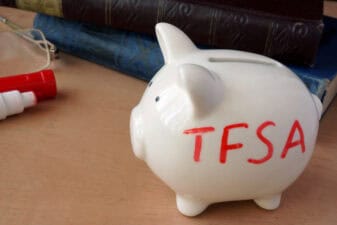The past five years have been a tough go for Enerplus (TSX:ERF, NYSE:ERF).
The overhaul of Canadian tax rules, the Great Recession, and North America’s fracking revolution has completely transformed the oil patch. And while those developments created opportunities for some companies, it was former royalty trusts like Enerplus that came out on the wrong end of this change.
But under the leadership of new Chief Executive Ian Dundas, Enerplus is transforming itself from a steady-eddy income trust into a more growth focused exploration and production company. Given that the stock is nearing a fresh 52- week high, it’s apparent that investors are buying into this strategy.
I wanted to learn more about the changes that are taking place at the Calgary based company. So I met with Enerplus Vice President of Investor Relations Jo-Anne Caza to discuss some of the major developments that were happening at the company.
Below is the transcript of our conversation; it has been lightly edited for clarity.
Baillieul: Jo-Anne thanks for taking the time to speak with me and our readers today.
Jumping right in, you have been Vice-President of Investor Relations at the company since 2000. From your perspective, how would you describe the changes have you seen at Enerplus? Especially over the past few years as the company has transitioned from a royalty trust into a traditional E&P company.
Jo-Anne Caza: I would say that not only have we seen a real transformation of the asset base but also the technical capability within the organization.
With the trust model we had a significant cost of capital advantage because we weren’t paying corporate tax under that trust structure. So we were very much acquisition focused in terms of being able to grow our business and using that low cost of capital.
We were trading at 10 or 12 times cash flow. We could buy assets at five or six times cash flow so it was an accretive transaction. [But] as we saw more and more companies moving into this business model, it became very competitive.
We also saw technology coming along and changing how you could access resources. That really reduced those organic costs for growing and adding production. We needed to make some changes to our business in order to be competitive with other E&P companies knowing that we were going to lose that cost of capital advantage when the trust rules came into effect and we converted into a corporation.
We were transforming our portfolio to bring in more what we would call resource plays into the portfolio that would give us scope and scale. So [there’s] lots of running room. Lots of drilling opportunity to be able to add production and reserves organically.
Then also added expertise to our technical teams to deliver that organic production growth — more engineers, more geologists, more geophysicists — so that we could be competitive with other E&P companies.
Combined all of that along the way with some fundamental changes happening in the commodity price dynamic as well.
If you went back to 2008 you had a much different natural gas price environment than we have right now. We see that collapse in natural gas over the last five or six years. What was a competitive business being in the shallow gas arena in Canada all of a sudden that changed dramatically for us and we needed to change our view in terms of what natural gas plays will be economic especially in this low price environment.
We dealt out of the portfolio. [We] rolled off a bunch of shallow gas reserves as well along the way because they just weren’t going to compete. In the lower gas price environment they weren’t economic. [We] moved out of the oil sands portfolio and used those proceeds to expand our position in plays like the Marcellus and the Bakken as well as the Welrich and the Duvernay in Canada.
Baillieul: That kind of hints at what I wanted to ask you next. Late last year Enerplus made new acquisitions in the Marcellus and sold off its position in the Montney. Why does the Marcellus look so much more attractive than say a shallow natural gas play in northern British Columbia.
Caza: Really it comes down to economics for us.
When we take a look at the well productivity in the Marcellus has far exceeded our expectations. So when we first got into the play in 2009 our expectations were we would see recovery from a typical well of say 3.5 to 5.5 bcf [billion cubic feet] of gas.
Right now we’re not drilling wells that would deliver anything less than typically between 10 and 13 bcf out of a well. And we can do that because the well results that we’ve seen over the last few years have delivered that kind of productivity and we’ve acquired additional acreage here.
In December we closed an acquisition of an additional working interest in existing areas. And with the amount of well control that we have have over the last few years and the drilling results we have great confidence in the ability to achieve those types of recoveries in certain areas of the Marcellus.
Ultimately those types of wells will deliver us somewhere in the 50% to 60% rates of return which is very economic for a dry gas play because it has a low cost structure as well.
The economics outperform even our Wilrich economics or other dry gas plays in Alberta or in Canada. So we’ll direct 20% to 25% of our CAPEX [capital expenditures] to the Marcellus this year.
Our capital allocation is all driven by economics. Wherever we can generate the most money.
Coming up next…
As a former royalty trust, dividends are particularly important to Enerplus’ shareholder base. In part two of my conversation with Jo-Anne, we dig deeper into the company’s distribution policy.
 Don't Miss AI's Third Wave
Don't Miss AI's Third Wave







